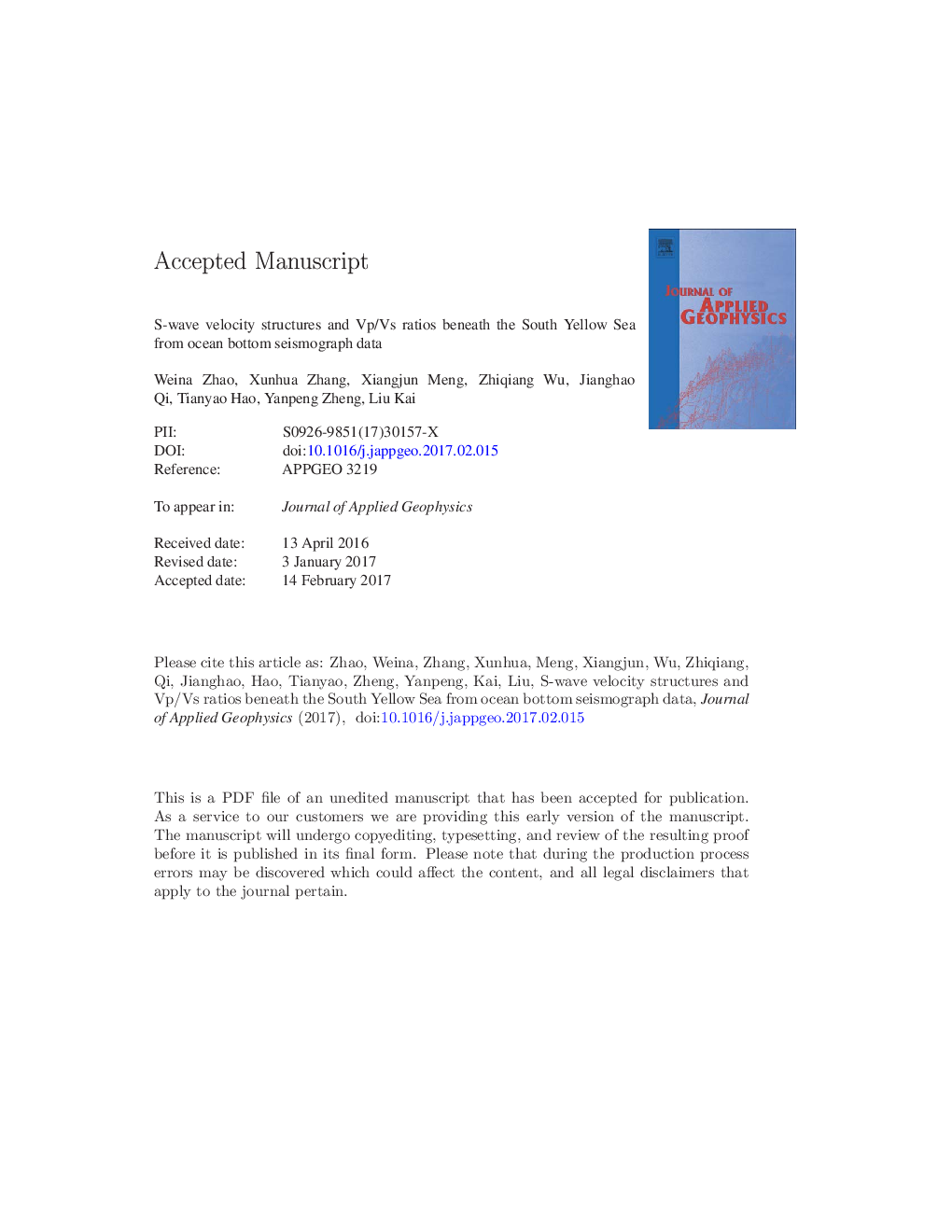| Article ID | Journal | Published Year | Pages | File Type |
|---|---|---|---|---|
| 5787241 | Journal of Applied Geophysics | 2017 | 23 Pages |
Abstract
In 2013, a wide-angle seismic survey (OBS2013) was conducted perpendicular to the south coast of the Shandong Peninsula in China, to investigate the crustal structure of the South Yellow Sea (SYS). Previous interpretation of the crustal structure of SYS did not use S-wave and Vp/Vs ratios as a constraint. In this study, we constructed the converted S-wave velocity model and Vp/Vs ratios of the northern SYS. Many receiver gathers showed good reflected and refracted S-phases, particularly in the Qianliyan Uplift. The S-wave crustal structure and Vp/Vs ratios were obtained based on a previous P-wave model which utilized RayInvr software by adjusting travel times. Results demonstrated that the S-wave velocities increased with depth, as in the P-wave model. This paper provided a lithologic interpretation of the velocity model. In the uppermost layer beneath the water, most Vp/Vs ratios were high (>Â 3). The nappe beneath the northwestern OBS2013 mainly consisted of granite and felsic gneiss. In the North Depression (ND), the Vp/Vs ratios of the marine sedimentary layer displayed the characteristics of carbonate rock. However, in the southeast of the ND, the sediment beneath the continental deposit layer was most likely composed of sandstone. The marine sedimentation in the Central Uplift (CU) mainly probably consisted of carbonate rocks with sandstone. Lack of strata with rich sand in the Permian and Triassic period suggested there was a more drastic uplift in the ND than the one in the CU during the Indo-Chinese epoch.
Keywords
Related Topics
Physical Sciences and Engineering
Earth and Planetary Sciences
Geophysics
Authors
Weina Zhao, Xunhua Zhang, Xiangjun Meng, Zhiqiang Wu, Jianghao Qi, Tianyao Hao, Yanpeng Zheng, Liu Kai,
